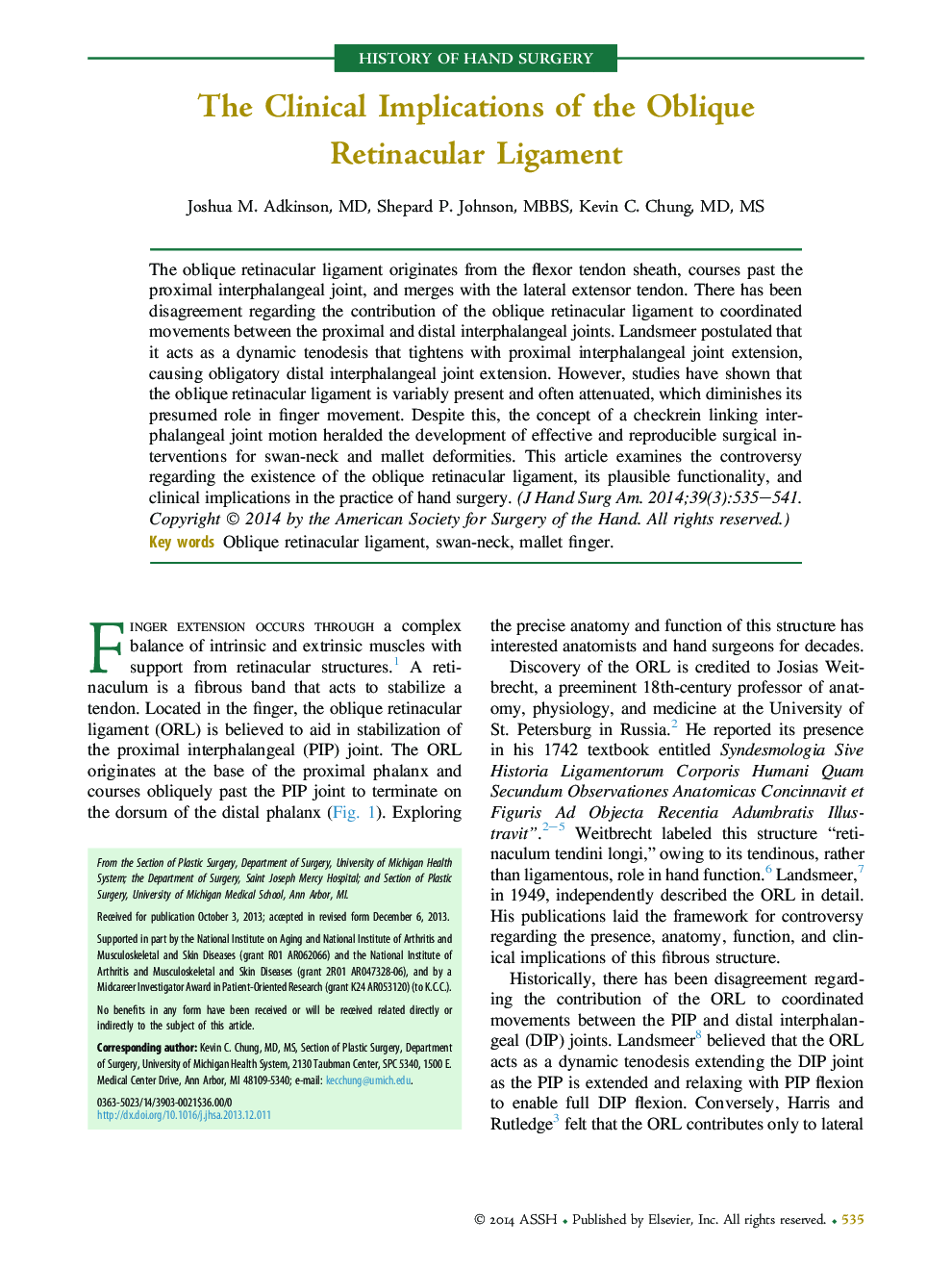| Article ID | Journal | Published Year | Pages | File Type |
|---|---|---|---|---|
| 4066686 | The Journal of Hand Surgery | 2014 | 7 Pages |
The oblique retinacular ligament originates from the flexor tendon sheath, courses past the proximal interphalangeal joint, and merges with the lateral extensor tendon. There has been disagreement regarding the contribution of the oblique retinacular ligament to coordinated movements between the proximal and distal interphalangeal joints. Landsmeer postulated that it acts as a dynamic tenodesis that tightens with proximal interphalangeal joint extension, causing obligatory distal interphalangeal joint extension. However, studies have shown that the oblique retinacular ligament is variably present and often attenuated, which diminishes its presumed role in finger movement. Despite this, the concept of a checkrein linking interphalangeal joint motion heralded the development of effective and reproducible surgical interventions for swan-neck and mallet deformities. This article examines the controversy regarding the existence of the oblique retinacular ligament, its plausible functionality, and clinical implications in the practice of hand surgery.
